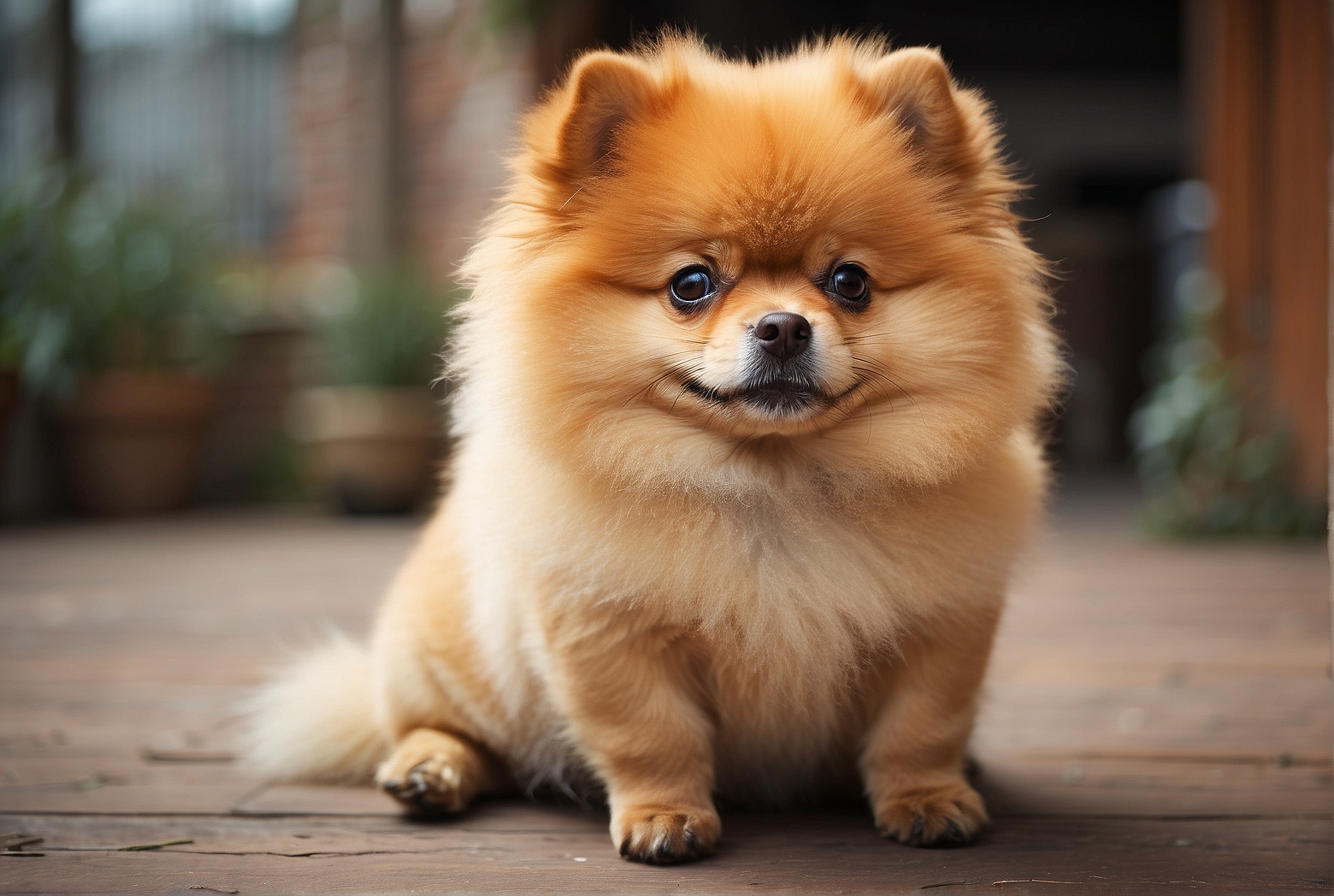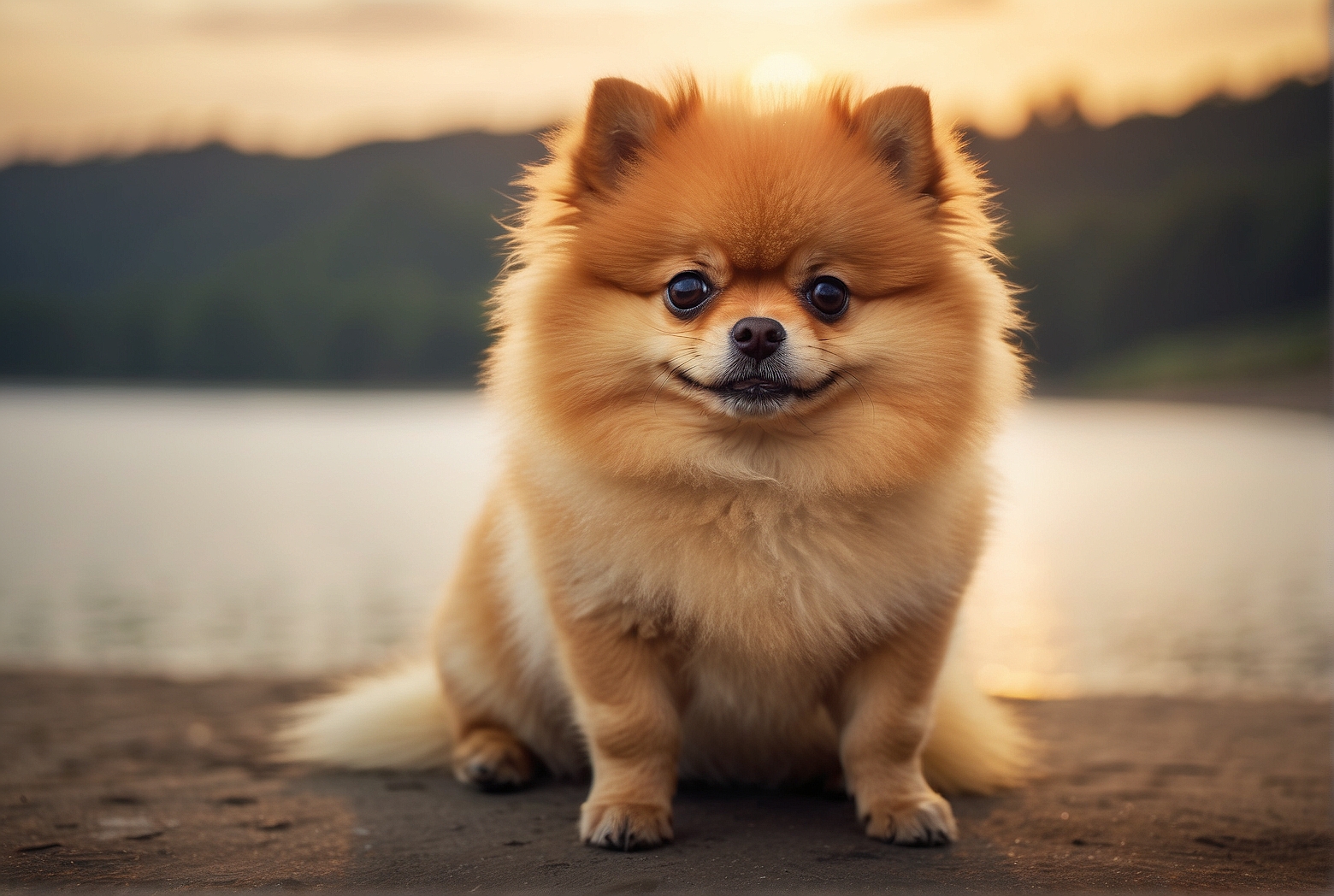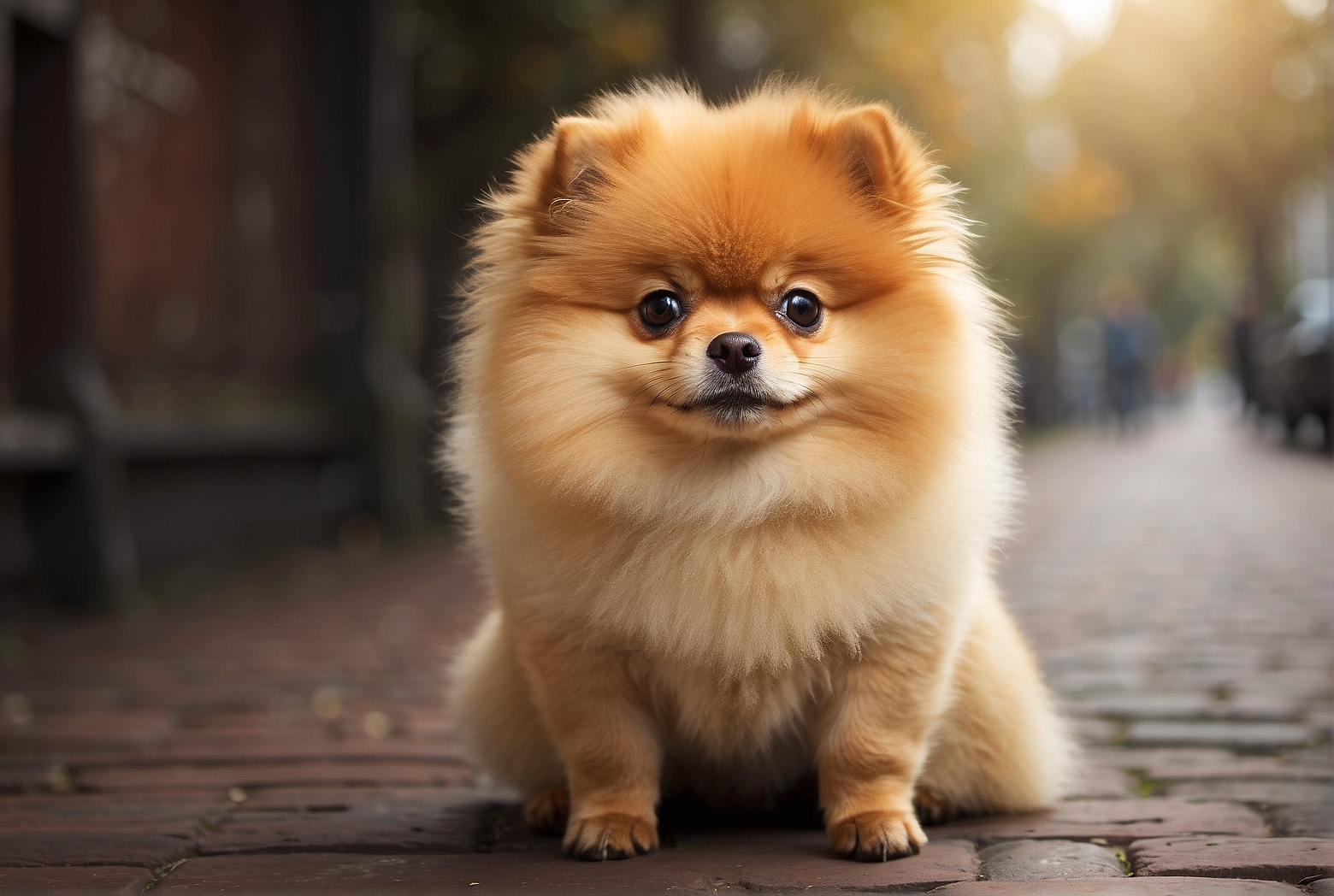So you’re curious about Pomeranian dogs and want to know more about their size? Well, look no further! In this article, we’ll take a closer look at these adorable furballs and explore everything you need to know about their size. Whether you’re planning to bring a Pomeranian into your family or simply satisfy your curiosity, understanding their size will help you better appreciate the charm and uniqueness of this popular breed. Let’s dive in and explore the wonderful world of Pomeranians!
Introduction to Pomeranian Dogs
Pomeranian dogs are an adorable breed known for their small size and fluffy coats. These pint-sized pups have a captivating history and a variety of unique characteristics that make them popular pets. In this article, we will delve into the history of Pomeranian dogs and explore the different factors that contribute to their size variations. Whether you’re a proud Pomeranian owner or considering adding one to your family, understanding their size is essential to ensure their health and happiness.
Brief history of Pomeranian dogs
The Pomeranian breed originated in the Pomerania region, which is now part of Poland and Germany. Surprisingly, these delightful dogs were not always as small as they are today. In the early days, Pomeranians were larger working dogs used for herding and pulling sleds. It was not until the 19th century, when Queen Victoria of England became enamored with the breed and began breeding small-sized Pomeranians, that their size began to decrease. Queen Victoria’s interest in Pomeranians significantly influenced their popularity and ultimately led to the breed we know and love today.
Characteristics of Pomeranian dogs
Pomeranians have a distinct appearance that sets them apart from other dog breeds. Despite their small size, they possess a lively and alert personality. Their expressive eyes and fox-like faces capture the hearts of many dog lovers. These dogs have a double coat consisting of a soft undercoat and a long, fluffy outer coat that can come in various colors and patterns. Despite their size, Pomeranians are confident and energetic, making them excellent companions for those looking for a small, but spirited, dog.
Understanding the Average Size
Weight range of adult Pomeranian dogs
Adult Pomeranians typically weigh between 3 to 7 pounds (1.4 to 3.2 kilograms). However, it’s important to remember that individual Pomeranians may fall outside of this range. Some may be slightly smaller, known as toy Pomeranians, weighing around 2 to 3 pounds (0.9 to 1.4 kilograms), while others may be slightly larger, known as standard Pomeranians, weighing up to 10 pounds (4.5 kilograms). Genetics, nutrition, and overall health can all play a role in determining the weight of a Pomeranian.
Height range of adult Pomeranian dogs
The height of adult Pomeranians typically falls between 6 to 7 inches (15 to 18 centimeters) at the shoulder. However, it’s essential to note that height can vary within the breed. Some Pomeranians may be slightly shorter or taller, but as long as they are within the general range, it is considered normal.

Factors affecting size variations
Several factors can contribute to the size variations observed among Pomeranians. Genetics, as with any breed, has a significant impact on a Pomeranian’s size. The lineage of a Pomeranian, including the size of their parents and ancestors, can influence their ultimate size. Nutrition also plays a crucial role in a Pomeranian’s growth and development. Providing a balanced diet and proper portion control is essential to ensure your Pomeranian maintains a healthy size. Additionally, certain health conditions or medications can affect a Pomeranian’s growth, so regular veterinary check-ups are crucial.
Pomeranian Size Standards
Size standards for show-quality Pomeranians
When it comes to show-quality Pomeranians, there are specific size standards set by kennel clubs. For example, the American Kennel Club (AKC) states that show-quality Pomeranians should ideally weigh between 4 to 6 pounds (1.8 to 2.7 kilograms) and have a height of around 6 to 7 inches (15 to 18 centimeters) at the shoulder. These size standards ensure consistency and uniformity within the breed in the show ring.
Comparison of size standards between different kennel clubs
While most kennel clubs have similar size standards for show-quality Pomeranians, there may be slight variations. Therefore, it is essential to familiarize yourself with the specific guidelines of the kennel club you are associated with or interested in. By understanding the size standards set by different kennel clubs, you can better assess the suitability of your Pomeranian if you plan to participate in dog shows or competitions.
Teacup Pomeranians
Explaining the concept of Teacup Pomeranians
The term “Teacup Pomeranian” has gained popularity in recent years, referring to Pomeranians that are exceptionally small, often weighing less than 3 pounds (1.4 kilograms). It’s important to note that Teacup Pomeranians are not a separate breed or variety but rather a descriptor for extremely small-sized Pomeranians. They are typically the result of breeding smaller Pomeranians, often crossing them with other toy breeds to achieve a compact size.
Controversies and concerns related to Teacup Pomeranians
While Teacup Pomeranians may seem incredibly appealing due to their miniature size, there are several controversies and concerns surrounding them. Breeding for extremely small size can lead to various health issues, including fragile bones, dental problems, a weakened immune system, and organ complications. Additionally, the breeding practices used to produce such small dogs can be unethical, with some breeders prioritizing size over the well-being of the dogs. It is crucial to approach the idea of Teacup Pomeranians with caution and prioritize the health and welfare of the dog over their small size.
Growth and Development Stages
Size changes from birth to adulthood
Pomeranians go through different growth stages from birth to adulthood. At birth, Pomeranian puppies are incredibly tiny, weighing only a few ounces. As they mature, they experience rapid growth during their first few months, gradually gaining weight and height. By the age of six months, most Pomeranians have reached a significant portion of their adult size. However, it’s important to remember that Pomeranians can continue to grow and develop until they are around one to two years old.

Factors influencing growth and development
Various factors can influence the growth and development of Pomeranians. Genetics play a significant role, as mentioned earlier, with the size of their parents and lineage impacting their ultimate size. Nutrition is another crucial factor, as providing a well-balanced diet rich in nutrients is essential for proper growth. Additionally, the level of physical activity and exercise a Pomeranian engages in can influence muscle development and physique. Regular veterinary check-ups and discussions with a trusted veterinarian can provide valuable guidance on ensuring the healthy growth and development of your Pomeranian.
Size Health Issues
Potential health problems related to Pomeranian size
While Pomeranians are generally healthy dogs, their small size can make them prone to certain health issues. One common health concern is patellar luxation, where the kneecap dislocates from its normal position. Dental problems, including overcrowding and tooth decay, can also be more prevalent in Pomeranians due to their small jaws and misaligned teeth. Additionally, Pomeranians may be susceptible to collapsed trachea, a condition where the windpipe narrows, leading to breathing difficulties. Regular veterinary care and attention to your Pomeranian’s size and overall health are crucial in preventing and managing these potential health problems.
Tips for maintaining a healthy size
Maintaining a healthy size in Pomeranians involves a combination of proper nutrition, exercise, and regular veterinary care. Providing a well-balanced diet that meets your Pomeranian’s nutritional needs is essential for maintaining their ideal weight. Consult with your veterinarian to determine the appropriate portion sizes and feeding frequency for your Pomeranian’s size and activity level. Regular exercise, such as daily walks and interactive play, helps keep Pomeranians fit and prevents excessive weight gain. Lastly, scheduling routine veterinary check-ups ensures any potential health issues or weight fluctuations can be detected early and addressed promptly.
Weight Management
Guidelines for ensuring proper weight in Pomeranians
Keeping your Pomeranian’s weight within a healthy range is crucial for their overall well-being. To ensure proper weight management, it is essential to feed them an appropriate portion size of a high-quality dog food that matches their age, activity level, and size. Avoid overfeeding, as excess weight can lead to various health issues. It is also important to resist the temptation to spoil your Pomeranian with excessive treats, as they can quickly contribute to weight gain. Regularly monitor your Pomeranian’s weight and adjust their diet and exercise accordingly to maintain a healthy size.
Importance of a balanced diet and exercise
A balanced diet and regular exercise are vital components of weight management in Pomeranians. A high-quality dog food that provides essential nutrients, including protein, healthy fats, and vitamins, is crucial for their overall health and maintaining a proper weight. Be sure to choose a dog food specifically formulated for small-breed dogs to meet their unique nutritional requirements. Alongside a balanced diet, regular exercise is essential to burn calories and keep your Pomeranian fit. Engage in activities that suit their size and energy level, such as short walks, interactive play sessions, and mentally stimulating exercises.
Size Comparison with Other Dog Breeds
Comparing Pomeranian size with other toy breeds
Pomeranians are often classified as a toy breed, which refers to small-sized dogs kept primarily for companionship. When comparing Pomeranian size with other toy breeds, they generally fall within the same weight and height range. Popular toy breeds, such as Chihuahuas and Yorkshire Terriers, have similar average weights and heights to Pomeranians. However, it’s important to recognize that there can be individual variations within each breed, and size can vary even among dogs classified under the same breed category.
Contrasting Pomeranian size with larger dog breeds
Compared to larger dog breeds, Pomeranians are significantly smaller in size. Breeds like Great Danes, Golden Retrievers, or even larger-sized working breeds like the Siberian Husky, tower over Pomeranians in terms of both height and weight. It is essential to consider these size differences when interacting with larger breeds to ensure the safety and well-being of your Pomeranian. Supervision and proper socialization are crucial when introducing Pomeranians to larger dogs to prevent any potential harm or intimidation.
Size Variations within the Breed
Range of sizes found within the Pomeranian breed
Despite the breed standard and general size expectations, there can be size variations within the Pomeranian breed. Some individual Pomeranians may naturally be slightly smaller or larger than the average specifications. Factors such as genetics, the size of their parents, and the influence of previous generations can contribute to these variations. It’s essential to remember that even if your Pomeranian falls outside the standard size range, they can still be healthy and thrive as long as their overall well-being is maintained.
Factors causing size variations within the breed
As mentioned earlier, several factors can cause size variations within the Pomeranian breed. Genetics play a predominant role, as the traits inherited from parents and ancestors can influence a Pomeranian’s size. Additionally, breeding practices, such as intentionally crossing smaller-sized Pomeranians to achieve Teacup sizes, can result in size variations within the breed. It is crucial to be mindful of ethical breeding practices that prioritize the health and welfare of the dogs over achieving specific size outcomes.
Tips for Choosing the Right-sized Pomeranian
Considerations for selecting a Pomeranian based on size
When selecting a Pomeranian, size should be one of the factors to consider. Determine if you have a preference for a specific size range within the breed. Keep in mind that while Pomeranians are generally small in size, their individual size can still vary. Consider your lifestyle and living situation when choosing the right-sized Pomeranian. If you live in an apartment or have limited space, a smaller-sized Pomeranian may be more suitable. On the other hand, if you’re an active individual looking for a more robust and slightly larger dog, a standard-sized Pomeranian may be a better fit.
Finding a reputable breeder or rescue organization
To ensure you find a Pomeranian that suits your desired size and temperament, it is crucial to find a reputable breeder or rescue organization. Research and find breeders who prioritize the health and well-being of their dogs, following responsible breeding practices. A reputable breeder will provide accurate information regarding the size of their Pomeranians and any potential size variations within their breeding program. If you prefer adopting a Pomeranian from a rescue organization, discuss your size preferences with them to find a suitable match. Remember to prioritize the overall health and welfare of the dog over their specific size.
In conclusion, understanding the size of Pomeranian dogs is essential for any current or potential owner. From their history and size standards to the concept of Teacup Pomeranians and potential health issues, thorough knowledge of Pomeranian sizes ensures the well-being and happiness of these delightful companions. By considering various factors and guidelines, you can choose the right-sized Pomeranian that fits perfectly into your family and lifestyle. Remember to select a Pomeranian that brings you joy, regardless of their specific size, and provide them with the love and care they deserve.
